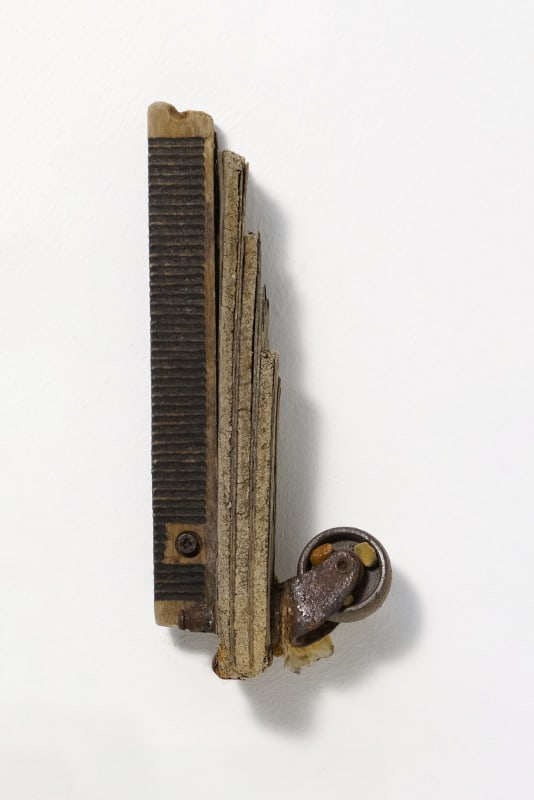Like his contemporaries Richard Long and Hamish Fulton, who all graduated from Saint Martin's School of Art in the late 1960’s, Ackling challenged the traditional and accepted methods of making sculpture by taking his art out of the studio and into the landscape environment. He collected driftwood from the beach and reclaimed broken and discarded materials such as clothes pegs, picture frames and household artefacts from our everyday lives. He transformed found and abandoned materials into works of great intensity with qualities akin to prehistoric art; beautiful and compelling but without revealing their meaning or purpose. For over 40 years his method remained unchanged; by directing sunlight through a small hand-held magnifying glass, he burnt lines directly onto the wood surface - or sometimes card - in intricate linear geometric patterns. Ackling said that his lack of physical contact with the materials was key, the light itself captured passing through space was what enlivened the surface of the discarded wood.
Using this ritualistic and repetitive process, Ackling burnt into his pieces an imprint of real time often keeping note of the exact time and duration taken to complete the work. In this sense these works are material records or commemorations of a moment in time, of place and of the artist’s momentary connection with the elements and landscape. His pieces are small, quiet and contemplative, anchored in the solitude and place of their making. In some works, the lines pause only to continue a short space later - these gaps charting the moment a cloud passed over and extinguished the beam of the sun through the glass lens.
Ackling lived and worked in London and Norfolk. He died in 2014 at the age of 67. Annely Juda Fine Art enjoyed a long relationship with him spanning many decades including numerous solo exhibitions as well as group and curated shows and exclusively represents his estate.
Ackling’s works have beenexhibited extensively worldwide including major solo shows throughout Europe, USA, Australia and Japan and in group exhibitions including; Tate Britain and Tate Modern, Serpentine Gallery, Kettles Yard, Stedelijk Museum and the Metropolitan Museum of Art, Tokyo. He is also represented in many major public collections including; British Museum, Tate Collection, Victoria and Albert Museum and the Stedelijk Museum.
